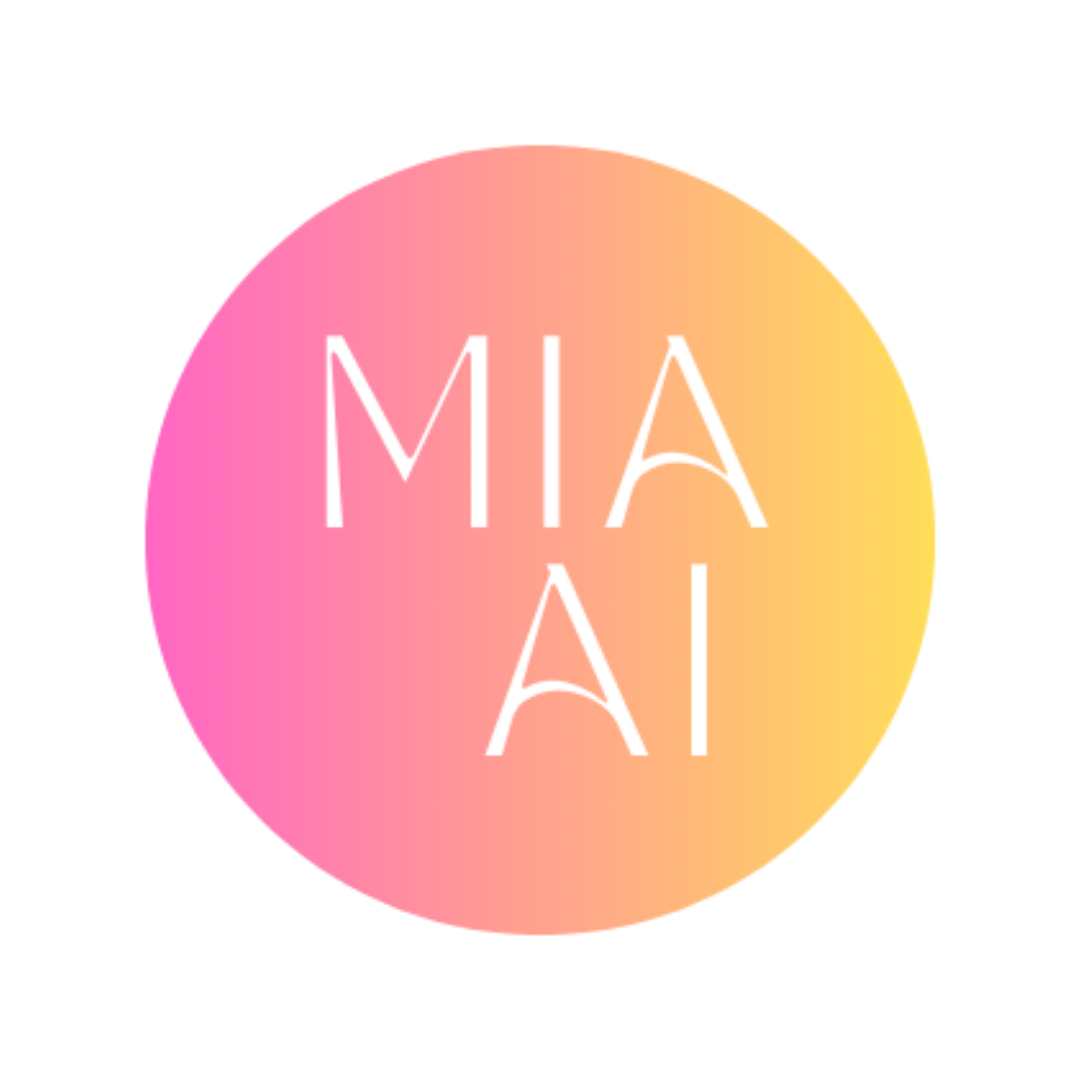- Generative Letters
- Posts
- #32 From Zero to Website: How AI Built Miami AI Hub’s Website
#32 From Zero to Website: How AI Built Miami AI Hub’s Website
AI News in a Minute | AI Tools Worth Your Attention | Community News
This Week’s Menu
From Zero to Website: How AI Built Miami AI Hub’s Website
What I Read This Week in Artificial Intelligence
Gen AI Academy
Don’t have time? Read this first 👇
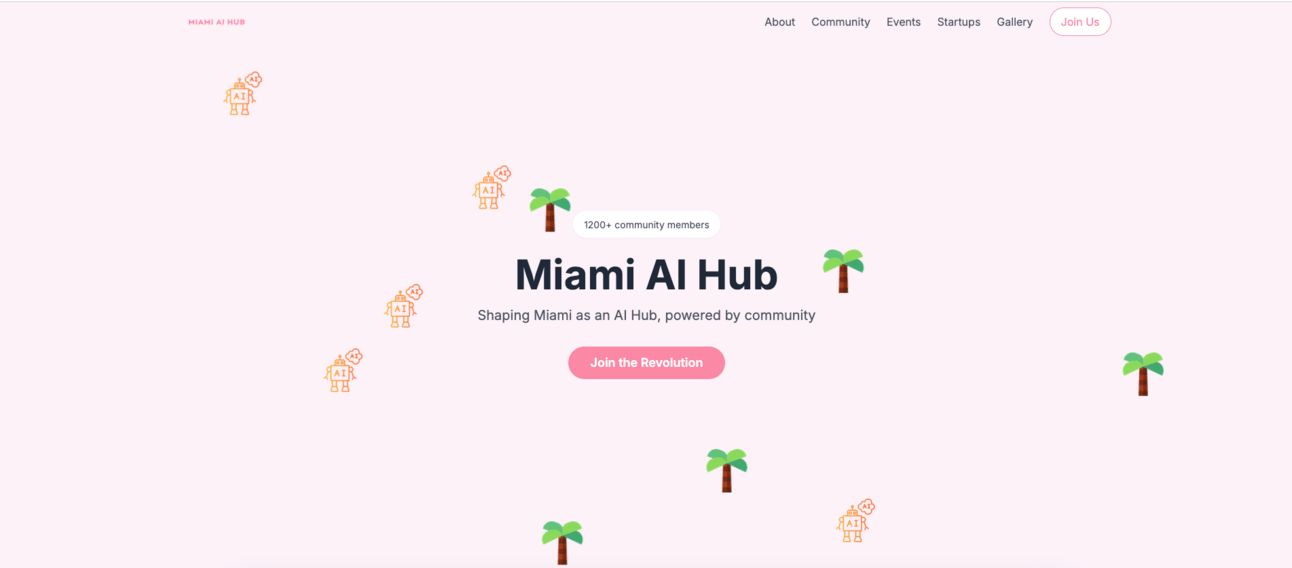
From Zero to Website: How AI Built Miami AI Hub’s Website
From Zero to Website: How AI Built Miami AI Hub’s Website
AI is changing the game for developers everywhere. Startups are popping up left and right, all racing to create the next big thing in AI-powered development. Just look at Devin, the AI software engineer who's making waves in the industry. And people like Nvidia’s CEO, Jensen Huang, is saying that coding as we know it might soon be a thing of the past. With AI, anyone could build complex programs without needing to be a coding wizard.
Right now, almost every dev tool you pick up has some kind of AI feature—whether it’s an agent, a companion, or something in between. But one tool is really stealing the spotlight lately: Cursor AI. After hearing so much about it, I decided to dive in, and let me tell you—it blew my mind.
How I Built the Miami AI Hub Website Without Writing a Single Line of Code
Instead of being developers, we’re becoming Orchestrators—directing AI companions and agents to do the heavy lifting for us.
Yep, you read that right. I built the entire Miami AI Hub website without typing a single line of code, all thanks to Cursor AI. It’s a bit wild to think about, especially since I've been coding for years. But honestly, with the way AI is evolving, knowing how to code is becoming more of a bonus than a necessity. Instead of being developers, we’re becoming Orchestrators—directing AI companions and agents to do the heavy lifting for us. Let me walk you through how I did it because if I can do it, so can you.
The Journey: From Idea to Live Website
It all started with an idea: I needed a website for Miami AI Hub. Normally, that would mean rolling up my sleeves and diving into code. But this time, I wanted to see how far I could push AI tools.
Step 1: Set Up the Project with Cursor AI
I kicked things off by heading over to Cursor AI. With Claude Sonnet as my sidekick, I laid out the basic instructions for what I wanted in the backend. Cursor AI made it easy to set everything up—no manual coding required.
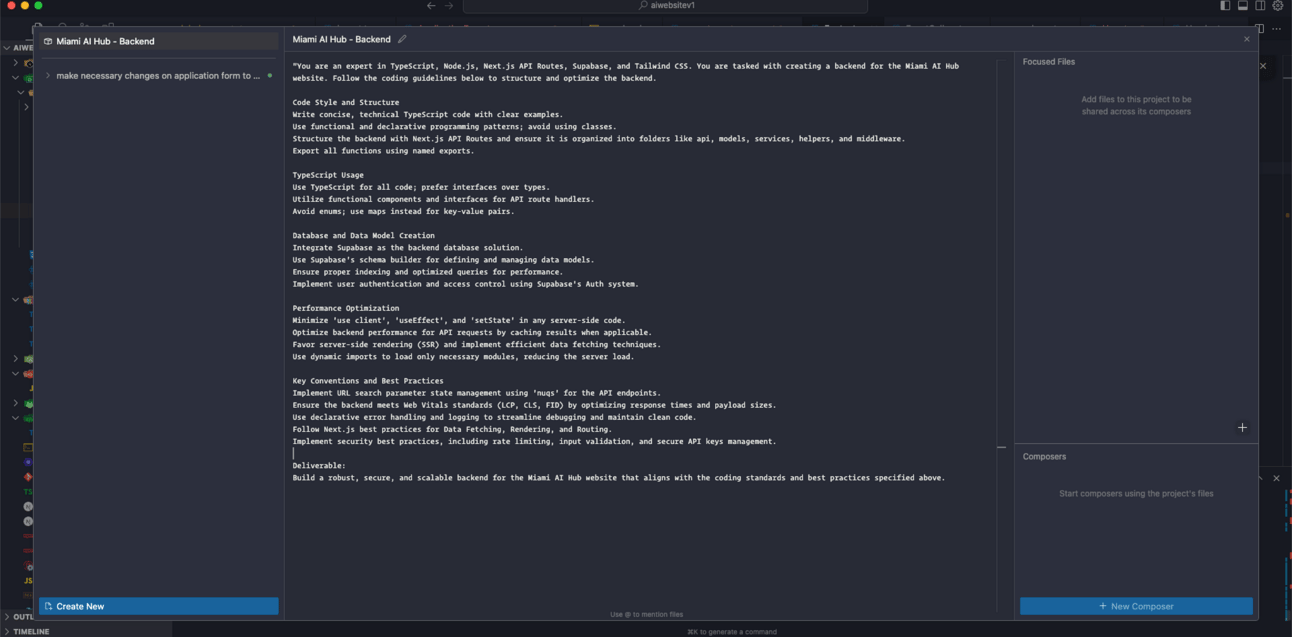
Step 2: Bringing in the Big Guns with Next.js, TypeScript, and Tailwind CSS
For the framework, I went with Next.js because it’s rock solid, and TypeScript for that extra bit of safety. Tailwind CSS came in handy for styling—it’s super intuitive and quick to work with, especially when you’re not coding from scratch.
Step 3: Get Inspired and Design with V0 by Vercel
I needed some design inspo, so I scrolled through Behance and Pinterest. Once I had a vision, I used V0 by Vercel to generate the UI components. This tool is like having a designer on speed dial.
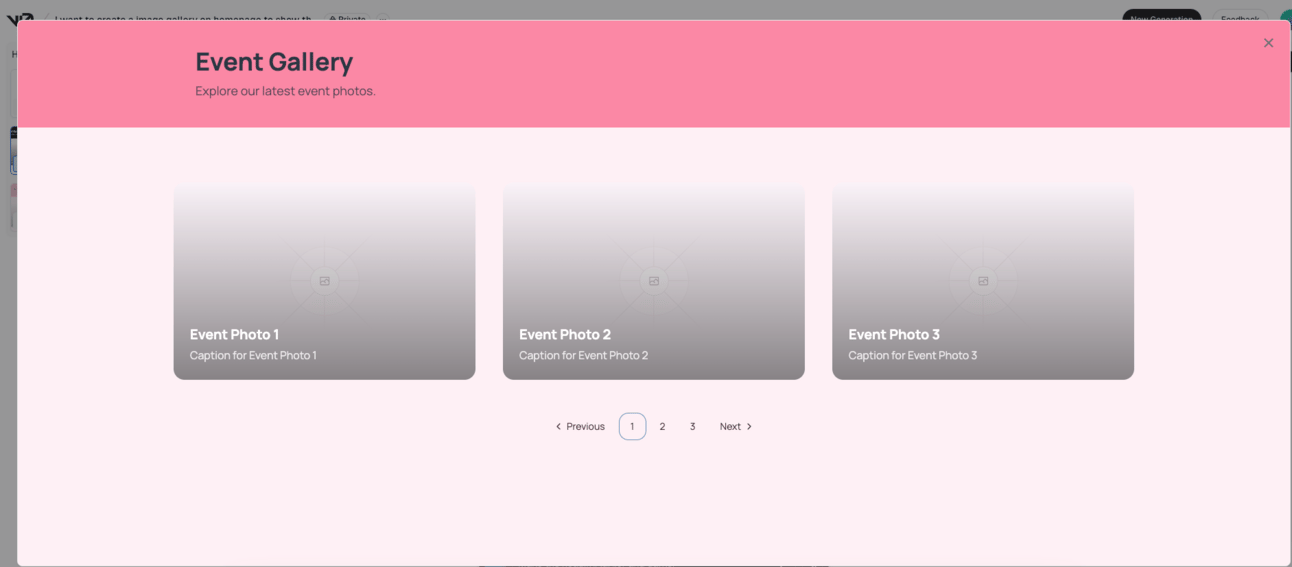
v0 by Vercel
Step 4: Icons, Copy, and Database—All the Extras
For icons, I grabbed some from Freepik and React Icons, and for the website copy, I let ChatGPT work its magic. I also tried out Supabase for the database, which was surprisingly easy to use for a first-timer like me. And so funny but you can ask Cursor to create SQL codes for to you create tables, right policies etc.
Step 5: Troubleshooting with AI Friends
When I hit an obstacle, I jumped into chats with Claude or V0’s support to figure things out. No stress, just quick solutions.
Step 6: Deployment Magic with Vercel
Finally, I deployed everything on Vercel. It’s connected to my GitHub repo, so any updates I make get automatically deployed—no extra work is needed. I added a custom domain, and boom—miamiaihub.com was live!
Check the website to play “catch me if you can” with your cursor.
From Developer to Orchestrator
What I’ve realized through this experience is that the role of a developer is evolving. We’re no longer just writing code—we’re orchestrating. With these AI companions and agents, we guide the process, setting the direction while the AI does the heavy lifting. It’s a new way of thinking about development, and it’s opening doors for anyone, regardless of their technical background.
Just Ship It
Sure, the site isn’t perfect, but that’s okay. The key takeaway? Just ship it. Get your project out there and tweak it as you go. The tools are out there, and they’re powerful. So, if you’ve got an idea, don’t wait—start building.
If you’ve got questions or want to dive deeper into how I did this, I’m here to help. Big shoutout to all the Discord communities that had my back, and a special thanks to Michelle Bakels, Julian Benegas -founder of BaseHub AI, and Mckay Wrigley for their even late-night support.
This is just the beginning—AI is changing everything, and I’m excited to see where it takes us next.
What I Read This Week in Artificial Intelligence
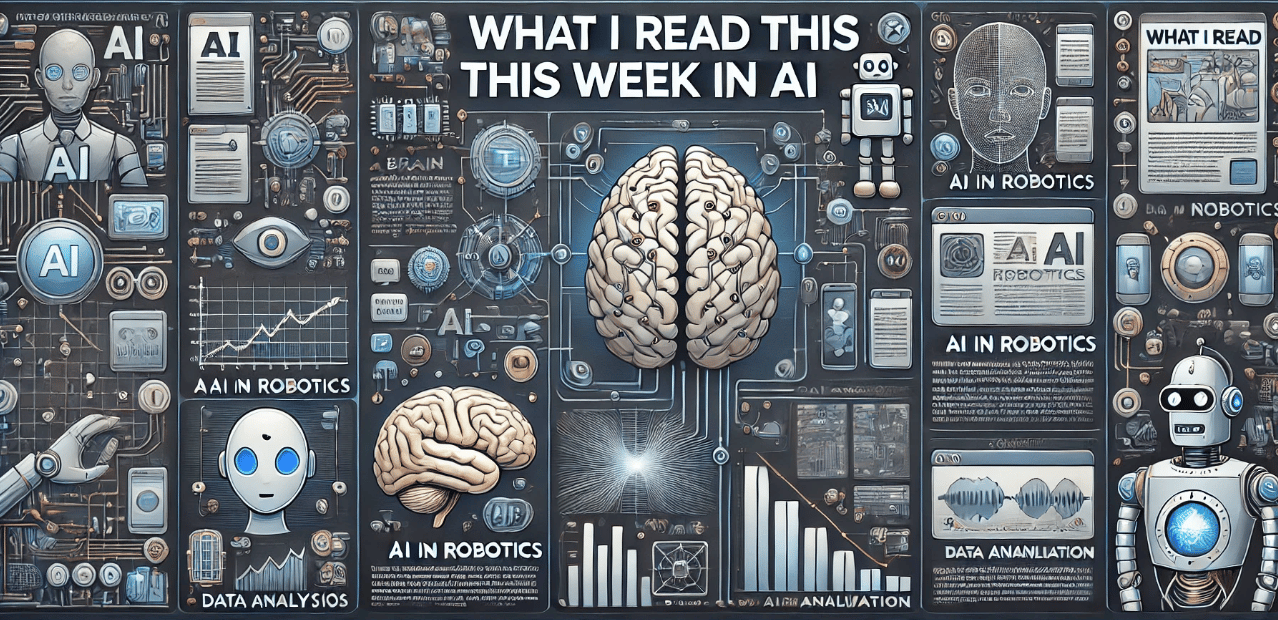
OpenAI and Anthropic will send AI models to the US AI Safety Institute for safety evaluations to enhance responsible AI development and testing before public release.
Midjourney is launching a hardware team, seeking applicants and hinting at innovative devices, amid increasing competition in AI image generation.
California's controversial AI bill has passed the legislature and is now waiting for the governor's signature, potentially impacting AI regulations in the state.
OpenAI is in talks to raise over $100B in funding, led by Thrive Capital, to address financial needs amid significant revenue and losses in AI operations.
Apple will unveil the iPhone 16 on September 9, featuring embedded AI like a smarter Siri, but full AI capabilities may roll out gradually over the next few years.
NVIDIA launches NIM Agent Blueprints, which are customizable AI workflows for enterprises, enabling rapid deployment of generative AI applications across various sectors.
OpenAI plans to launch 'Strawberry,' a new product capable of advanced reasoning, by the fall 2024, while also developing another model, 'Orion,' to enhance its offerings and reduce errors.
Anthropic has published the system prompts for its Claude language models to enhance transparency, a move typically avoided for competitive reasons.
Stephen Wolfram emphasizes the need for philosophers in AI research to address ethical and existential questions arising from advanced technology.
Community News
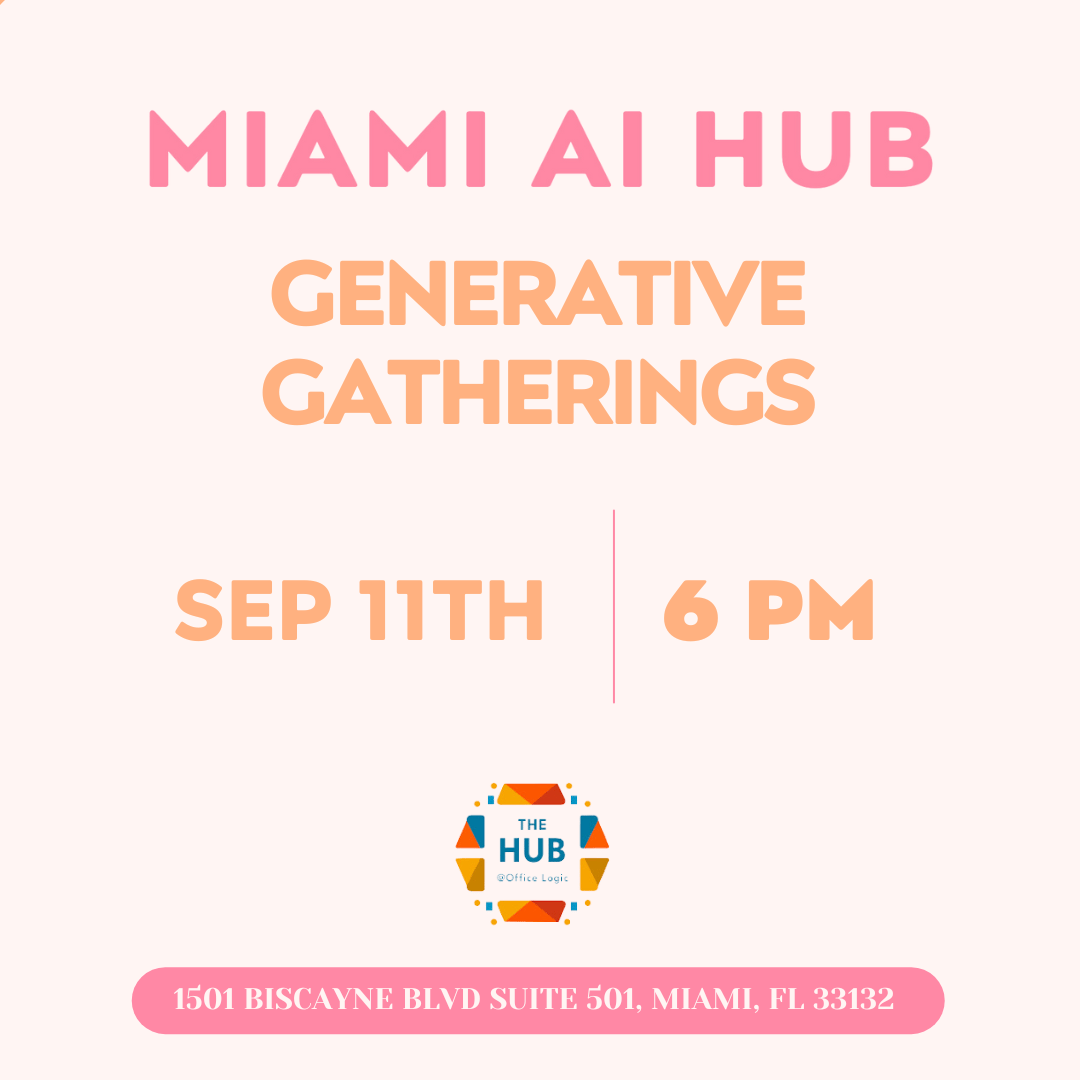
Almost 200 people already registered for the event!
Join us for an exclusive evening of innovation and inspiration at the Miami AI Hub's Generative Gatherings on September 11th at 6 PM at the Office Logic Hub.
Whether you're a tech enthusiast, AI professional, or an aspiring entrepreneur, this event is your opportunity to dive into the cutting-edge world of AI and explore how it can transform your business.
In addition to the keynote, we will showcase some of the most exciting AI startups in the region. If you're a founder with a groundbreaking AI startup, this is your chance to shine! Apply to showcase your startup at the event by filling out the application form.
Event Highlights:
Keynote Speaker
AI startup showcases
Networking opportunities with industry leaders and peers
Date & Time: September 11, 2024, at 6 PM
Location: Office Logic Hub, Miami
